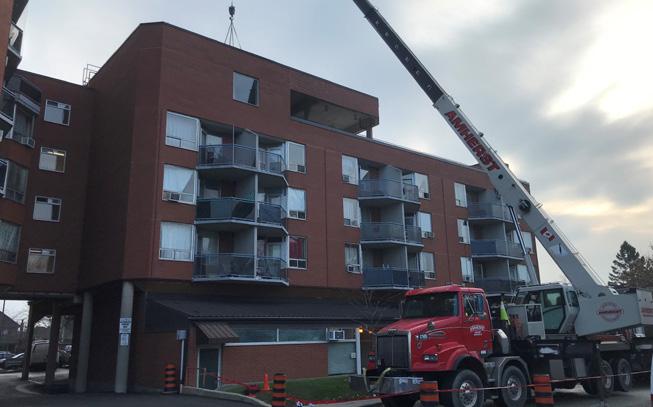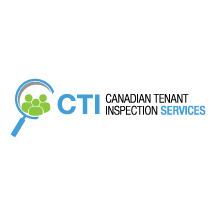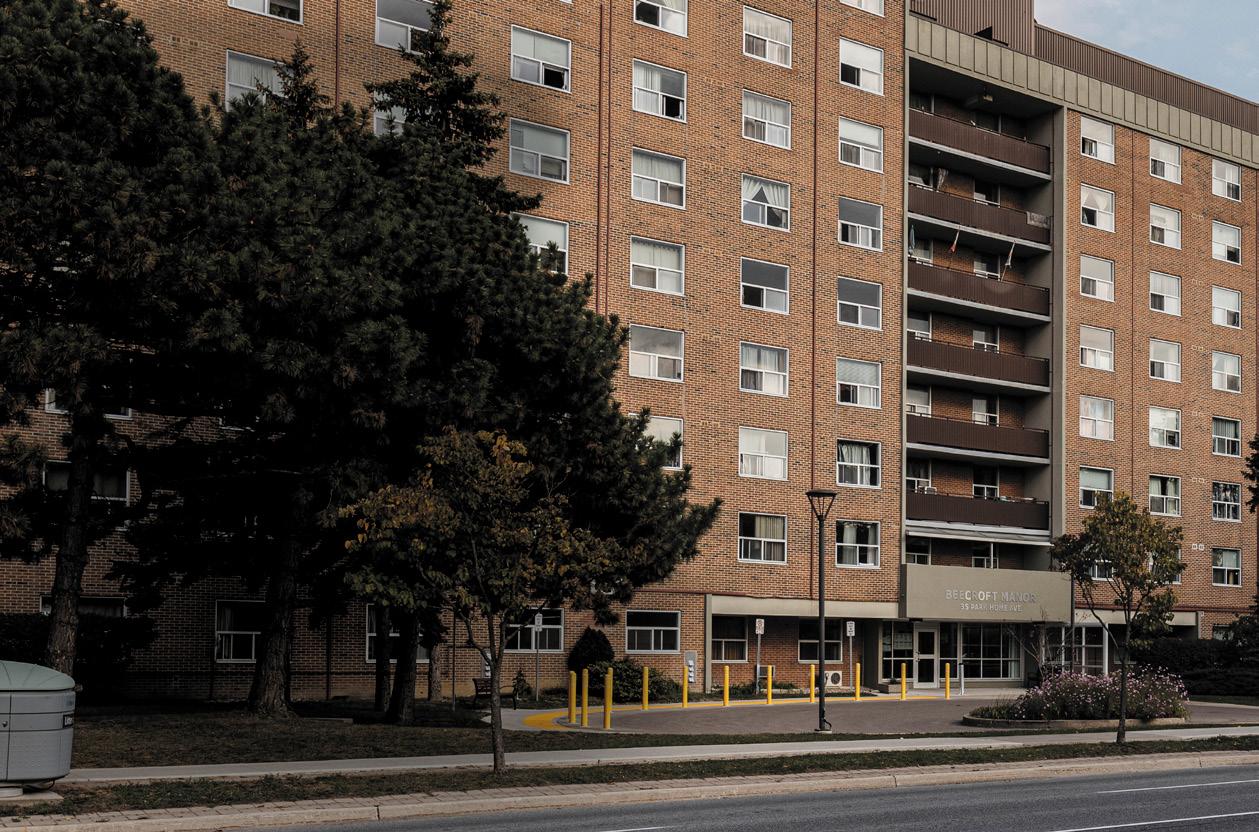RENTT: Canada's student housing situation





Industry associations share insights Survey shares industry best practices to maximize value from limited resources. Changes to elevator code require technological upgrades 3D door detectors and emergency telephone with video will make elevators safer and more accessible. Is it time to bring in a property manager? Hiring a property manager or engaging a property management firm is a signficant business decision.
Panel members discuss the challenges and potential solutions surrounding student housing.
Mike Porritt, Vice President International – Advisory Services, The Scion Group
Greg Romundt, President, Centurion Asset Management Inc.
John Dickie, President, Canadian Federation of Apartment Associations (CFAA)
Trish MacPherson, Partner, Alignvest Student Housing Inc.
The official publication of: Canada’s #1 most widely read publication for Apartment Owners, Managers and Association Executives Vol. 15 No. 3 Aug/Sep 2022
Stay connected when it matters the most by safely attracting prospects, converting quality leads and supporting residents. A single connected solution for Canadian multifamily marketing management.

Keep business moving:
• Revolutionize the prospect journey by automating the entire lead-to-lease cycle
• Enrich the resident experience with a comprehensive service portal
• Increase conversions with dynamic and integrated websites and internet listings
• Optimize your online presence and attract more prospects with SEO and PPC advertising
©2022 Yardi Systems, Inc. All Rights Reserved. Yardi, the Yardi logo, and all Yardi product names are trademarks of Yardi Systems, Inc. (888) 569-2734 | Yardi.com/RentCafe Learn with us at Yardi.com/ Webinars


Project Management | Building Science | Structural Engineering | Roofing Surveys | Condition Assessments | Asbestos and Mould Surveys 1.888.348.8991 McIntoshPerry.com We’ve encountered every possible building-related issue over our five decades of history. With more than 500 engineers, project managers and technical experts across the country, we provide a full range of services to the rental housing industry.
EDITOR’S NOTES
What are you thankful for?
At the time of this writing, Thanksgiving is a week away, but will have passed by the time this issue gets into your hands. Given what’s happening in the world and at home – hurricanes devastating Canada’s East Coast and Florida, the ongoing conflict in Ukraine, COVID-19, rising bankruptcies, higher food and gas prices – it’s difficult to feel good about your situation. But there are still good moments in our lives to be thankful for. I’m thankful to have my family with me, to be gainfully employed, to have a roof over my head, and to be reasonably healthy. I’ll also share another birthday with my daughter, which is a great gift for me. What are you thankful for this year?
This issue of RHB Magazine features the RENTT panel engaging in a discussion of the student housing situation in Canada. Panel members provide their input on universities’ responsibility for student housing, the lack of purpose-built student housing, the impact of the growing number of international students, government policies, what can be done to improve the state of affairs, and other key topics. They also provide their opinions on the impact of rising interest rates.
The second article asks the question: Is it time to bring in a property manager? Every rental property owner must decide for themselves whether they should hire a property manager or engage a third-party property management firm. The third article describes recent changes to the elevator code, which will require technological upgrades to make elevators safer and more accessible.
Check out CFAA’s newsletter, National Outlook, and the Regional Association Voice. FRPO has created a municipal candidate questionnaire, which all Ontario members should share with local candidates prior to the municipal election to see where they stand on issues affecting our industry. Yardi Canada wraps up this issue with insights from a survey of industry associations.
We support two-way communication, so send your comments or questions to david@rentalhousingbusiness.ca. I look forward to hearing from you.
Stay safe and take care!
Enjoy the issue!
David Gargaro

Senior Editor
Publisher
Marc Côté marc@rentalhousingbusiness.ca
Associate Publisher
Nishant Rai
Editorial David Gargaro david@rentalhousingbusiness.ca
Contributing Editor
John Dickie, President CFAA jdickie@rentalhousingbusiness.ca
Creative Director / Designer Scott Clark
Sales Executive Justin Kreslin Office Manager
Geeta Lokhram
Subscriptions
One year $49.99 Cdn
Two years $79.99 Cdn Single copy sales $9.99 Cdn
Opinions expressed in articles are those of the authors and do not necessarily reflect the views and opinions of the CFAA Board or management. CFAA and RHB Inc. accept no liability for information contained herein. All rights reserved. Contents may not be reproduced without the written permission from the publisher.
P.O. Box 696, Maple, ON L6A 1S7 416-236-7473
Produced in Canada
All contents copyright © RHB Inc. Canadian Publications Mail Product Sales Agreement No. 42652516
4 | Aug/Sep 2022






We hope to partner with you today... ...to build for a SOLID tomorrow Emergency Response | Disaster Restoration | Suite Upgrades | Capital Improvements | New Development Montreal | Ottawa | Toronto | Edmonton | Calgary | Vancouver | Victoria 66 Leek Crescent, Richmond Hill, ON, L4B 1H1 info@solidgc.ca (905) 470-0707 solidgc.ca





6 | Aug/Sep 2022 47 Regional Association Voice RHB’s forum for rental housing associations to share news, events and industry information The Member Associations Hot Topics: LPMA provides tips on avoiding problems with student tenants, and explains how the Housing Mediation Service helps to settle disputes between landlords and students. pg. 49 HDAA discusses the pending municipal election, including the platforms of the leading candidates for mayor. pg. 53 EOLO addresses housing affordability, and where the leading candidates stand on affordability issues in the campaign to become the next mayor of Ottawa in the October 24 election. pg. 57 IPOANS discusses its advocacy efforts regarding Nova Scotia's 2% rent cap, the details of its education programs, and the benefits of its membership services. pg. 61 RENTT: Canada's student housing situation Panel members discuss the challenges and potential solutions surrounding student housing. Is it time to bring in a property manager? Hiring a property manager or engaging a property management firm is a signficant business decision. Final Take Away Industry associations share insights Survey shares industry best practices to maximize value from limited resources. RAV features the latest industry news from four member associations. Changes to elevator code require technological upgrades 3D door detectors and emergency telephone with video will make elevators safer and more accessible. CONTENTS VOL.15 NO.3 2022 64 30

ASPHALT PAVING CONCRETE PAVING SITE servicing LANDSCAPE CONSTRUCTION BUILDING RESTORATION WINTER SNOW SERVICES service@forestgroup.ca 416.524.3000 24 HOUR EMERGENCY SERVICE forestgroup.ca DIVERSIFIED CONSTRUCTION
PRESIDENT’S CORNER
This issue of National Outlook provides more details about the federal government’s review of housing, which could lead to counterproductive tax changes. CFAA is currently working with the major public multi-family REITs, REALPAC and FRPO to co-ordinate our government relations and public relations campaigns to deal with that review. With information and input from all four groups, CFAA wrote a submission for the Prime Minister’s Office (the PMO), the Department of Finance and the Minister of Housing. See page 35.
Anther issue facing rental housing developers is the recently announced changes to the Rental Construction Financing Initiative (RCFI). The changes demand that the rents of 40% of the units be set at 80% of average market rent That will kill RCFI, which was supposed to encourage housing supply. Advocacy may be able to turn around the announced RCFI changes, since they will have a significant negative impact on rental housing development, which is already pulling back due to increased interest rates and construction costs.
National Outlook reports on in-place rents and rent increases for a large sample of rental units within the purpose-built rental sector, thanks to Yardi Canada. This data will serve as a very useful corrective to the unhelpful narrative about significant rent increases in asking rents on turnover among units among small rental buildings. See page 38.
Statistics Canada released the housing portion of the results of the 2021 Census. It showed a substantial decrease in the proportion of Canadians in core housing need! See page 41.
CFAA-RHC 2023 will be held in Halifax from Wednesday, June 14 to Friday, June 16, 2023! Please plan to attend.
The Home Depot remains a CFAA Strategic Partner. By registering your membership in CFAA (either directly or through one of CFAA’s 13 member associations) with Home Depot Pro, you benefit yourself and CFAA. This partnership benefits every rental housing provider reading this magazine.
Yardi Systems is another a long-standing CFAA Strategic Partner. As well as receiving Yardi’s help with rent information, we look forward to working with Yardi to bring you informative panels, and the latest and best information on technology and marketing for rental housing providers, at CFAA-RHC 2023 in Halifax.
If you are not already a direct member of CFAA, please consider joining CFAA as a Direct Rental Housing Provider Member, or a Suppliers Council Member. Visit www. cfaa-fcapi.org or e-mail admin@ CFAA-FCAPI.org today.
John Dickie, CFAA President

8 | Aug/Sep 2022

In this issue of... NATIONAL OUTLOOK
35. Finance Minister Chrystia Freeland says Canada needs more rental supply. Yet what has Prime Minister Trudeau mandated her to do? What is CFAA doing about it? What will CFAA’s future steps be?

CFAA Member Associations
Corporation des Propriétaires Immobiliers du Québec (CORPIQ) www.corpiq.com P: 514-748-1921
Eastern Ontario Landlord Organization (EOLO) www.eolo.ca P: 613-235-9792
Federation of Rental-housing Providers of Ontario (FRPO) www.frpo.org P: 416-385-1100, 1-877-688-1960
Greater Toronto Apartment Association (GTAA) www.gtaaonline.com P: 416-385-3435
38. In-place rents in Toronto increased a mere 3.6 per cent from one year ago, while Ontario inflation is 10.7 per cent. How did in-place rents change in your city?
Hamilton & District Apartment Association (HDAA) www.hamiltonapartmentassociation.ca P: 905-632-4435
Investment Property Owners Association of Nova Scotia (IPOANS) www.ipoans.ns.ca P: 902-425-3572
LandlordBC www.landlordbc.ca P: 1-604-733-9440
Vancouver Office P: 604-733-9440 Victoria Office P: 250-382-6324
41. Statistics Canada figures show that the proportion of Canadians in core housing need decreased sharply in 2021, as compared with 2016!

London Property Management Association (LPMA) www.lpma.ca P: 519-672-6999
New Brunswick Apartment Owners Association (NBAOA) www.nbaoa.ca jbrealsetate@nb.aibn.com
Manufactured Home Park Owners Alliance of British Columbia (MHPOA) www.mhpo.com P: 1-877-222-4560
To subscribe to CFAA’s e-Newsletter,
your
The Canadian Federation of Apartment Associations represents the owners and managers of close to one million residential rental suites in Canada, through 12 apartment associations and direct landlord memberships across Canada.

CFAA is the sole national organization representing the interests of Canada’s $950 billion rental housing industry.
For more information about CFAA itself, see www.cfaa-fcapi.org or telephone 613-235-0101.
Professional Property Managers’ Association (of Manitoba) (PPMA) www.ppmamanitoba.com P: 204-957-1224
Saskatchewan Landlord Association Inc. (SKLA) www.skla.ca P: 306-653-7149
Waterloo Regional Apartment Management Association (WRAMA) www.wrama.com P: 519-748-0703
10 | Aug/Sep 2022
please send
email address to communication@cfaa-fcapi.org.









Fast Tenant Screening Online Rent Collection Accounting & Reporting Lead Management Lease with e-Signature Automated LTB Forms Maintainance Tracking Property Inspection Mi Property Portal Built per Canadian regulations For Canadian property managers & landlords www.mipropertyportal.com

Owners with the most owned suites in Canada 2 1 4 3 5 Starlight Investments - 61,000 suites Mainstreet Equity Corp - 15,750 suites Realstar Management - 26,768 suites QuadReal Property Group - 24,778 suites Homestead Land Holdings - 26,707 suites The Minto Group - 14,730 suites** ** includes 7,275 suites in the Minto REIT 6

FOR YOUR MAINTENANCE PRODUCTS YOUR One STOP SOURCE H&S Building Supplies Ltd. is one of Ontario’s premier maintenance supply wholesalers. We specialize in the multi-unit residential space; providing quality products, competitive prices, exceptional customer service, on-time delivery, and product knowledge second to none. We carry over 14,000 products in stock, daily. 96 Maplecrete Road, Concord, ON L4K 1A4 | sales@hsbuild.com | 1-800-207-8325 | HSBUILD.COM
RENTT:
This month’s issue brings together the RENTT (Rental Executives National Think Tank) panel to discuss Canada’s student housing situation, including universities’ responsibility for student housing, the lack of purpose-built student housing, the impact of the growing number of international students, government policies, what can be done to improve the state of affairs, and more.
RHB: Welcome to RHB Magazine’s RENTT panel. We appreciate the time and effort involved in participating in today’s discussion and sharing your experience. Our readers will benefit from your input. Today we’d like to talk about the student housing situation in Canada.

Why aren’t universities required to build more student housing, relying so heavily on thirdparty rental stock?
Greg Romundt: University funding is constrained and most funding is for academic and research programs, not for residential housing. Given university borrowing often falls onto provincial balance sheets, many provinces restrict the amount of borrowing universities are permitted to do. As a result, many universities are looking to the private sector to meet these needs.
Trish MacPherson: Universities, publicly funded in Canada, are focused on providing quality education and learning opportunities, but a full student experience includes living away from home and the growth potential that comes with related events. Infrastructure on-campus is aging with significant deferred capital needs. With universities needing to allocate limited capital resources to projects, increasing or maintaining
quality housing stock is not getting the attention it needs. The quantity of purpose-built student accommodation needed in Canada has increased with enrollment over the last decade. There is not enough quality stock on-campus to meet the needs of incoming students.

John Dickie: While each provincial government provides much of the funding for universities, the governments do not direct their operations. There is a constitutional principle the universities have considerable freedom to run their affairs. For example, we do not want governments telling universities what professors to hire or fire. In addition, building student housing is expensive, and governments could not tell universities or colleges to build housing unless they provided or guaranteed the money to build the housing.
Mike Porritt: Institutions that have historically been destination schools have usually had at least enough for their non-local first year class. Traditionally, it has been part of the culture of many institutions and they often started housing non-local first years and a mix of upper year students to serve as mentors. As first-year classes grew and international population exploded, upper years were pushed out and most schools focused on the first-year cohort. Only a handful have substantial housing for students beyond first
Canada’s student housing situation




 By David Gargaro
By David Gargaro
RENTT
Trish MacPherson, Partner, Alignvest Student Housing Inc.
Greg Romundt, President, Centurion Asset Management Inc.
Mike Porritt, Vice President International – Advisory Services, The Scion Group
John Dickie, President, Canadian Federation of Apartment Associations (CFAA)
experts:
year. After first year, it is hard to call it mission critical and with campus housing being a selffunded operation it is very risky if filling the spaces cannot be certain. Land use is also an issue as academic needs will always take priority over housing space.
RHB: In your opinion, why is there more offcampus purpose-built student housing in the U.S. than in Canada?
Trish MacPherson: The student housing provision in the U.S. is approximately 10 per cent compared to Canada at 3 per cent. The UK is further ahead in putting students’ needs for housing top of mind, with provisioning being over 17 per cent. Many U.S. universities are located in areas with favourable zoning environments and large amounts of land available for the private sector to build housing targeted at students.
Greg Romundt: Many innovations originate in the U.S. before coming to Canada and, combined with Canadian institutional conservatism, it can take years before Canada catches up on new ideas. Student housing is just one example. Capital markets are more sophisticated in the U.S., which helps finance new ideas. We’re not constrained just by fewer universities having done deals, but fewer banks understanding the space, and all of this means that, for now, it will run slower than the U.S.
Mike Porritt: First, many campuses in the U.S. are in college towns where the city is quite small and doesn’t have the infrastructure to absorb huge populations as campus grows. These schools are also destination schools, so not a lot of local students. Purpose-built student housing grew out of people seeing the opportunity to put a focus on students needing housing in these cities and getting economies of scale, putting them together to give the students a better experience. Canada’s biggest institutions are in our biggest cities so more students live at home or can more easily find housing. Second, the U.S. has historically been very entrepreneurial and faces less restrictions in trying new things. It is also easier in these college towns to get land to do these projects. Much different than getting land in most of Canada’s big cities. Third, Canada didn’t need any for a long time. Until the double cohort and international explosion, there was not much of an issue and the cities could absorb the students.
John Dickie: Besides the issues my colleagues have mentioned, some U.S. student housing was formerly military housing. Canada has little or no tradition of the private sector providing purpose-
built housing for people serving in the military, whereas the U.S. does. That provides a model and sometimes the actual units.
RHB: The number of international students has increased substantially in recent years. How is this affecting rental levels and availability?
John Dickie: The influx of international students played a major role in the runup of rents between 2015 and 2020. Another factor was an increase in the number of non-permanent residents, such as computer workers and skilled office workers. The number of international students fell sharply because of the pandemic, and the result was elevated vacancies and rent decreases in areas which served universities and downtown cores. Now the tap has been turned back on, vacancies are down and rents are up, in large part in response to the sharp increase in the demand for rental housing.
Greg Romundt: Rental pressure is being felt across the spectrum in student housing and standard purpose-built rental as there is not enough supply to meet demand. However, during COVID-19, because so many students studied from home and international students stayed in their home countries, there was availability and less pressure on rents than in standard rentals. Now the borders have opened and students have returned, I anticipate the market will be tight. Further, there are limited locations to build student housing proximate to campus, so I believe these pressures may intensify.
Trish MacPherson: The international student population in Canada has experienced doubledigit annual growth rates as a result of the highquality education in Canada combined with attractive costs, access to future employment, and quality of living. This year, incoming international students were impacted in their ability to find housing due to delays in visa processing. Once visas were approved, the limited stock of available housing was already spoken for. In general, as international and domestic student enrollment continues to outpace housing starts, the supplydemand dynamics will continue to frustrate students looking for housing.
Mike Porritt: These numbers have been going up steadily for about 15 years. Canada is likely to be pushing one million international students by 2030 and is nearly 700,000 now. The number is one issue. Where they are coming from and how much they can afford is another and has changed since 2015. Chinese students have been
16 | Aug/Sep 2022 continued on page 22



. . PROVIDING OUR CLIENTS WITH THE HIGHEST POSSIBLE ROI THE APT PROMISE:
Delivered to you by
Rising interest rates and student housing
By David Gargaro
RHB: Interest rates are continuing to rise. How will this affect the development of student housing?

John Dickie: The increase in interest rates works with an increase in capitalization rates. The two do not move in lockstep, but cap rates tend to trend in the same direction as interest rates. Higher interest rates raise the cost of financing building development and construction. Higher cap rates result in a given stream of income being valued at a lower amount. Both factors discourage development. However, many developments may go ahead since, for developers, the key interest rate is not the Bank of Canada policy rate, which has its greatest effect on short-term borrowing for consumer goods, but rather on the market interest rate paid on five-year and 10-year Government of Canada bonds. The 10 year rate is hovering around 3.2 per cent.
Trish MacPherson: Interest rates are one piece of housing development dynamics and, combined with increasing costs of labour, land, and supplies, it is becoming increasingly difficult to make a business case for development. Specifically in student housing, you want to develop in very close proximity to campus and finding private lands on which to do so at a cost that makes sense in the current interest rate environment is challenging.
Greg Romundt: Costs of construction have risen on all fronts, including interest rates. We’re seeing the impact of these
cost increases on housing supply in general and student housing is no different. If you increase the cost of construction from any source, be it materials, taxes, fees, labour costs, time to build or interest rates, etc., it reduces the economic viability of building, which ultimately reduces what gets built.
Mike Porritt: It will have a negative impact in the short term. Construction costs and land and site availability are probably a bigger issue for offcampus housing. The construction costs are the primary issue on campuses. There is significant capital looking for opportunities in student housing but development has been the area with the most hurdles.
18 | Aug/Sep 2022


CONTACT US! info@snaile.com or visit www.snailelockers.com for contactless and secure resident delivery information MULTI-RESIDENTIAL | RETAIL | OFFICE | SCHOOL CAMPUS | www.snailelockers.com MANAGING RESIDENT DELIVERIES WHY SNAILE CANADA? Scan QR Code to find out! CERTIFIED DATAHOSTED INCANADA SERVICING NAC A D AN DATA SECURITY PRIVACYLAWS PROC E D SERU C ANADIANCARRIERSDELIVE R CONTRACTS INFORCE PROTECTED BY PIPEDALAW S CANADIAN TOWNS+CITIES55 + OEM $ 9/10 SERVICING LARGEST CANADIAN BUILDING OWNERS CANADIAN CYBER INSURANCE POLICY MADE IN CANADA INTEGRATED WITHYOURBUILDING SSOFTWAR EAPI ISO/IEC 27001 PRICE MATCH GUARANTEED PROTECTED BY CANADIAN ELECTRICAL CODE CSA C22. 1 FIRE RATED CAN/ULCS102 ORIGINAL EQUIPMENT MANUFACTURER NOT A RESELLER ICKETIN UP TO 355x LESS ²COEROM VNE I R ONMENTALLY FRIENDLY



20 | Aug/Sep 2022 Luxer One has 15+ years of experience providing industry leading Parcel Locker solutions. Coinamatic is a proud Canadian Distributor of Luxer One parcel delivery lockers. www.coinamatic.com | 1.877.755.5302 | info@coinamatic.com CONTACT US! MADE IN NORTH AMERICA USER FRIENDLY APPLE IPAD TOUCHSCREEN UL CERTIFIED 12-GAUGE STEEL The Future of Package Management! User Friendly Self Service 24/7 Package Access Eliminates constant staff disruption for deliveries Officially approved by Canadian Carriers Robust Lockers designed and built in USA 6-8 week delivery timeline Over 200,000,000 parcels delivered to Luxer One lockers





Learn more about our mobile and cashless bundles and other digital laundry room solutions. Future-proof your laundry. Keep your residents happy with Coinamatic’s digital laundry room solutions. With the Coinamatic digital laundry room mobile app + card bundle, residents get their choice of easy-to-use mobile or laundry card payment. Mobile App + Laundry Card Bundle
decreasing in numbers as more stay in China for their undergraduate education. This used to be Canada’s largest source country for students and they had more funds to spend on education and housing. Now, students from India have grown to over 200,000 students from just 20,000 in a decade. Thirty-five per cent of Canada’s international students are from India and they come with less money than the Chinese. The numbers from India are expected to grow. Other countries are also, generally, sending students that are less well off than 10-15 years ago. Rents are rising due to demand, so there is a broad housing shortage. Students are often seeking places where they can save money and this leads to overcrowded houses or apartments. The housing market needs more diversification in offerings. A diversity of offerings needs to be planned as well as increasing the number of units.
RHB: What can the government do to help improve the student housing situation?
Greg Romundt: We need an expedited approvals process, a reduction in taxes and development charges, and higher density. Even property tax deferrals or phase-ins could make more projects pencil so more will get built. Unfortunately, there is not enough skilled labour to build the properties Canada needs given the number of new people coming.
Trish MacPherson: The private and public sector needs to work together to address this issue. Some universities are sitting on large land banks or buildings that need redevelopment and partnerships with the private sector can be developed to reduce the risk of capital investment and development for institutions. As well, zoning needs to be addressed in areas directly surrounding institutions. Students want and need to live close to campus.
John Dickie: Speed up approvals. Fund more residences. Take off some of the financial pressure to draw in international students.
Mike Porritt: Provincially, the BC government created a housing strategy that had a significant portion dedicated to student housing. Through low interest loans, grants, and easing of restrictions on P3 partnerships with the private sector for oncampus housing, the government had a goal of boosting student housing on campuses by 8,000 beds. It is nearly there in buildings that have been approved, purchased or finished.
RHB: In your experience, what are universities in Canada doing that enables them to work well with purpose-built student housing providers?
Greg Romundt: This is an evolving process. It wasn’t too long ago that some universities and provincial governments were hostile to the idea of working with private capital. This is slowly changing as more deals get done and university administrators share their experiences with others. Today, more universities are seeing the private sector can bring solutions to address student housing issues and are engaging with consultants that help them think about what they want and need and formulate a strategy to get there.
Mike Porritt: The relationships that work best have a lot of planning go into them from the start. It is important for the university to have an understanding of what they want to do and what they want the provider to do and this isn’t the same for all institutions. At some places, they already operate their own high quality student life operation so they are best placed to operate at least the student life aspects of campus housing and probably the assignments. At some other places, it may be their first housing project so they may want the provider to be responsible for all matters related to the housing project including student life.
John Dickie: Many realize they need the housing to serve the students they attract. Most will refer overflow to private market housing providers. At a minimum, many will designate off-campus housing providers as preferred partners, providing some assurance of quality to prospective renters and their parents. The more enthusiastic universities will enter into joint ventures with off-campus providers or agree to head leases under which the university rents the building and can place tenants and run the facility as part of the university’s student housing system. Some universities can provide land, either on-campus or off-campus. They can also facilitate municipal zoning to permit dense student housing and take the pressure off the rental market serving nonstudents.
Trish MacPherson: Higher education has recognized there is a housing crisis for students. Universities can remove the liabilities of deferred maintenance and ownership from operations by partnering with private student housing providers. Allowing developers and operators to focus on supplying and maintaining housing infrastructure while universities focus on providing quality education and supplying the access to beds and student programming is a balance that serves the needs of the public and private sector as well as the student customer.
22 | Aug/Sep 2022 continued from page 16
Trish MacPherson: Universities continue to suffer from the lack of capital resources to invest in housing. Priorities for investment are academic buildings and other revenue generating sites on campuses.
John Dickie: Many residents don’t want students in their neighbourhoods, but many universities are in the middle of residential neighbourhoods. The way to get student renters out of the regular community is to congregate them in purpose-built student housing, and provide them the services they need. That allows for a measure of control over their behaviour. Ironically, residents who oppose the student presence in their communities often oppose new purpose-built student housing developments.
Greg Romundt: The number one issue has been capital availability. Budgets are stretched and much existing stock is old and requires replacement. The next issue is it requires a willingness to engage with the private sector for solutions, and not all universities have gotten there in terms of acceptance. Further, every university has a different idea of what they want as an end result, such as who manages, who owns, is it joint venture, who builds, etc., so every situation is unique. There are no canned solutions, so it takes a lot of time to work through these details, even before there is a shovel in the ground.
Mike Porritt: For on-campus housing owned or operated by the university, the usual issue is deferred maintenance on existing buildings. There have been deals structured whereby the private partner funds the renovations needed in exchange for taking on revenue shares. The other issue is debt capacity for the university. If a campus needs to save their debt capacity for an academic building, they are unlikely to want to use it on campus housing. They are also unlikely to get government support for campus housing in most cases.
RHB: For universities that lack experience with purpose-built student housing, what can providers do to help improve the situation?
Greg Romundt: Because universities are public institutions, there are rules about how they can engage with the private sector, so they need to frame the process inside their regulatory
guideposts. We’re often approached at the early stages to discuss how things could work, to discuss objectives and constraints, and to see if something is economically viable. Sometimes the wish lists aren’t realistic, and this requires time to work through their governance process. I think once a broad framework that is workable for the university and for the private sector has been designed, it’s possible to go to market, following the required regulatory process, usually with a specialist consultant that knows this space and who can bring the right solutions. These are really long processes, and even when done, this is a partnership that will last 50-100 years so building a governance process around that takes time and patience.
Trish MacPherson: Universities need to look at the success of other markets outside Canada and the success that has also been demonstrated domestically in terms of how partnerships can be structured to benefit all. Student housing developers and operators are experts in what they do and are eager to help solve the housing crisis and need willing public partners to think creatively to tackle the problems everyone is facing.
John Dickie: Student housing providers can help with ideas, samples of other buildings which have worked well, templates for request for proposals, and suggestions. However, the fundamental shift needs to come from universities. That requires staff to see the light, or new staff who have either more experience with private student housing development or a willingness to explore it. Events like CAPRE’s Student Housing conference held recently in Toronto can help, since it draws developers and universities and colleges. CFAA has also been presenting sessions on student housing at CFAA’s Rental Housing conferences.
Mike Porritt: Providers with experience can help with guiding the planning process. However, the campus is better served by a separate advisor to help them find the provider. This is actually how The Scion Group started 20 years ago, helping universities find a housing solution. In most cases, finding the provider is through an RFP process and having a skilled advisor to take them through that process is important to help them narrow it down to a shortlist and then put together a deal that makes sense for the campus and provider and, ultimately, the students that will live in the building.
RHB: Thank you for your time.
RHB: In your experience, what are the underlying issues for universities in Canada that have difficulty with purpose-built student housing?
Is it time to bring in a manager?property Is it time to bring in a manager?property
Many rental property owners will reach a tipping point where they must decide whether to hire a property manager or engage a third-party property management firm. Owners of small to medium-sized businesses might think it’s not worth the expense. However, there comes a time when the benefits of a property manager outweigh the cost.


But when is the right time to do so? And how do you find the right person or firm?
When is the right time?
There’s no formula for making the move to hire a property manager or engage a thirdparty property management firm. You don’t have to own a certain number of units or generate a specific amount of rental income to take that step. Every situation is different, and your determining factors will vary.
employees’ time in other parts of your business. It could involve dividing tasks between existing team members and the property manager, or focusing the property manager on a specific building or group of buildings. A property manager will also save time if you own multiple properties or don’t live close to your rental properties.
“By the time they have reached out to us for support, they have reached their capacity with the tenant maintenance and rent collection conversations, especially during the pandemic,” said Kris Boyce, CEO, Signet Group. “Property owners can be overwhelmed by the tenant matters and the management of the assets. It typically becomes no longer cost- or time-effective for them to continue to self-manage.”
Kris Boyce CEO, Signet Group
When deciding whether to hire a property manager or engage a property management firm, rental property owners should consider two key factors:
1. Time: Determine how much time they will save your company, and how you will use the time saved

2. Money: Balance the cost of a property manager against how much they will save in other areas, as well as the value they will add to your buildings and organization The time saved is one key benefit. Hiring a property manager or engaging a property management firm enables you to use your
“Historically, until around 2005, we managed our portfolio of roughly 500 units internally,” said Gabriel Diamond, Vice President, Well Grounded Real Estate. “However, we had one particularly challenging building that was occupying a disproportionate amount of time and resources. So given we had a small head count (less than five people), we thought it made sense to hire a third-party property management company for this particular building only. Then, around 2015, we decided to change to all third-party management to free up time to focus on growth and acquisition.”
Money is another key deciding factor. Do a cost-benefit analysis to determine when it makes financial sense to hire a property manager or engage a property management firm. Weigh the cost against the financial benefits of their services. For example, is there greater financial benefit in engaging an experienced third-party property management firm versus managing the property yourself or employing an internal property manager? You also cannot ignore the value of employing external expertise.
24 | Aug/Sep 2022
By David Gargaro
Gabriel Diamond, Vice President, Well Grounded Real Estate

Adriana Keresztes, Senior Vice President, Operations, Greenwin

“The key is profitability,” said Adriana Keresztes, Senior Vice President, Operations, Greenwin. “If an asset is underperforming or if it’s not as profitable as expected, an owner should seek the professional services of a reputable property management company. Together, both parties will find the recipe for success and what it’s going to take to bring that asset to the level of profitability that’s desired.”
Understanding the benefits
Dig a bit deeper to understand how a property manager can help your business. All benefits are tied to time and money in some way. Some of those benefits are secondary or less obvious.
“The number one benefit was an increase in time and resources that we could dedicate to other parts of our business,” said Diamond. “At the time, it was important for us to grow via acquisition and development, so offloading daily property management allowed us the time to carry out these strategic opportunities.”
If you’ve been managing your properties until now, you understand the time commitment. It’s not a 9 to 5 business. You’re required to be available at all times to handle a variety of situations, including emergencies. This is a challenge if you have a full-time job and rental property ownership is a secondary source of income. You might also lack the experience to deal with unusual or difficult situations involving your rental property.
Working with a property manager also removes (most of) the obligation to be on call. And when you’re shifting the management of more than one property to a third-party property management firm, the savings compound across your portfolio. The time saved multiplies across the number of units and buildings. You also receive the benefit of the provider’s resources.
“If a portfolio is managed by a company like ours with the significant number of units that we manage, the asset benefits from our ability to leverage our size when it comes to buying power and negotiating power on every level of service and goods that we are purchasing,”
said Keresztes. “When an asset becomes part of a portfolio, they are given the opportunity to benefit from savings with the shared staff model. They are supported by a regional office. These come at very little cost to the property owner.”
How to find a property manager
Once you’ve decided to hire a property manager or engage a third-party property management firm, you must take steps to find the right one. The rental housing industry is fortunate to have the resources to help you do so. Reach out to your network or your rental housing association for recommendations and referrals. Then conduct interviews with the short list of property managers to find the right person or firm to work with.
“We recommend that you review the property management’s website and meet their leadership team that would reflect the added value you would receive from the breadth of knowledge in the company,” said Boyce.
“Asking for client references is another way to ensure that the firm is a fit for your investment by asking other property owners about their experiences with the firm you are talking to. We also recommend that you ask for tours of the properties they are currently managing to see the standards to ensure they meet your standards.”
Experience and reputation are key factors to consider when evaluating property managers or property management companies. This is not a role for an inexperienced individual or firm. They must have practical, hands-on experience and knowledge of managing buildings and people. Property managers must possess a combination of skills and attributes, such as a community-minded approach, a customer-first mindset, an understanding of current technologies and techniques, and much more.
“The best-suited property management company will bring several key assets to the table,” said Keresztes. “It’s not just the reputation of the corporation, but of the professionals that work for that particular company. It’s also their respective track records, their ability to manage portfolios with a sense of ownership, and an ability to understand what value add means and what it is they have to bring to the table for that owner to be comfortable and assured that the asset is in good hands.”
26 | Aug/Sep 2022





Rentify Instantly verifies: Employment income Identity and address History of NSF fees Average closing bank balance Average monthly debt payments Overdraft percentage Consistent payment of rent Consistent payment of bills and more Reduced average verification time from 2 hrs to 5 mins Cost savings up to 50% compared to a credit score Rentify does not leave a mark on renters credit scores Bank statements are a significantly better predictor of evictions than credit scores Save thousands of dollars by reducing evictions Other benefits include: For more information or to book a demo visit www.rentify.house Protect your property with the power of bank statement analysis REDUCE YOUR EVICTIONS BY UP TO 25% powered by Canada’s banks $!
Depending on the situation, common interview questions for a potential property manager include:
• What are your fees and what do they include?
• What is included in the property management agreement, and what is excluded?
• What is the term of the contract? The termination provisions?
• If I sell the property, can I terminate the contract? On what notice?
• Can I keep the property account at my own bank branch?
• Will you assume the vendors I use?
• Will you hire my existing staff?
• What is the composition and experience of your team?
• Do you charge extra for large CAPEX projects? What repairs are not subject to the extra management charge?
Whether you’re planning to hire an individual or engage a third-party firm, look beyond their experience to determine if they are a fit for your company. The property manager must be able to work with your tenants and within your company culture. Inquire about their connection to your communities and demographics, as well as what assets they manage in the area. They should also explain how they overcome challenges and how they differ from the competition.
“It’s important to know you’re selecting a property manager that has a large base of team members in the mix, but the key question is how specialized they are and how many support departments they have,” said Keresztes. “Running property management only through generalists is a thing of the past and can be very dangerous. In today’s age, we need as many specialists and as many specialized support departments as possible to contribute to the success of an operation.”
Ensuring a successful relationship
The start of the business relationship will determine its success. Both parties must develop a level of comfort in working together. The property manager should understand how you have been managing the buildings to this point, and how you want the buildings to be managed going forward. You should also be comfortable with how the property manager works and communicates.
“The building owner and the property management firm should have regular scheduled meetings to ensure there are open lines of communication,” said Boyce. “Depending on the needs of the asset, monthly reports and quarterly meetings may be the right fit, whether in person or virtually. The key to any successful relationship is mutual respect, transparency, and setting achievable business goals that will add value to their investments.”
This comfort is necessary prior to entering into a property management agreement. The agreement should spell out both parties’ duties, responsibilities, and expectations. Both parties should be comfortable with the arrangement before moving forward.
There are many ways to run a rental housing business. Every rental property owner will have their own business plan. The property manager should understand this business plan and verify the ability to meet your needs and goals. At the same time, you should make those goals clear to the property manager.
“If the property manager doesn’t understand the business plan, the delivery will be substandard,” said Keresztes. “If the owner wants a cashflow operation, the property manager needs to know so that the property yields what is desired. Likewise, if the business plan is for value-add, the property manager needs to know this in advance.”
Property managers are responsible for making your life easier. That’s why you’re hiring the individual or engaging the thirdparty firm to manage the building. They should be proactive in handling issues and mitigating risks to the building and tenants. This often requires proactive decision-making, which means giving them the authority to act in your best interests.
Conclusion
Hiring a property manager or engaging a third-party property management firm is a major business decision. It will free up more time to focus on other areas of your business and provide a variety of financial benefits. Do your due diligence in finding an experienced property manager who can work within your corporate culture and provide the services you need. Reach out to colleagues or your association for recommendations.
28 | Aug/Sep 2022
Changes to elevator code require technological upgrades
By David Gargaro
North America has a unified elevator code between Canada and the United States. Both countries have their own organizations that administer elevator regulations (American Society of Mechanical Engineers (ASME) in the United States, Canadian Standards Association (CSA) in Canada). However, different jurisdictions across North America can adopt different changes from the elevator safety code or different years the code is updated. Ontario is typically an early adopter of changes and updates in elevator regulations, and is one of the strictest jurisdictions in North America.
The Technical Standards and Safety Authority (TSSA) is responsible for inspecting elevators in Ontario. The TSSA will be changing its compliance standards, which come into effect on November 1, 2022. New changes coming into effect on August 1, 2022 and January 1, 2023 will involve additional maintenance requirements as set out in the Maintenance Control Program (MCP). The updated regulations will require building owners to make technological upgrades to their elevators, including the door detectors and emergency telephone. These changes are designed to improve elevator reliability, reduce elevator downtime, and make elevators more accessible.
Door detectors
All new and modernized elevators will be required to have 3D door detectors installed.
In the early days, elevators were equipped with a physical strike bar. If someone or something pushed the bar back, the elevator door would retract. Most elevators were upgraded with photocell sensors, which use infrared light to sense when something or someone was in the doorway. For example, if a person put their arm in the space between the elevator doors as they were closing, the beam would be interrupted and the elevator doors would retract.
Under the updated elevator regulations, new elevators must be equipped with 3D door detectors. Rather than an infrared beam that identifies an object or person in the opening, these detectors scan a threedimensional area near the open doors to detect passengers or objects. If a person walks by the door within the scanning area, the elevator door would retract. With
the larger scanning area, there could be delays and other challenges with elevator operation.
“We’ve seen some issues with this technology in the past,” said Phil Staite, President, Quality Allied Elevator. “In some cases, the 3D sensor would prevent the elevator door from closing if someone was standing next to the elevator or just walking by.”
Emergency telephone and video
All elevators are equipped with an emergency telephone for contacting someone in the event passengers are trapped. The communication device was required to connect the passenger to a live person 24 hours a day, seven days a week.
The updated regulations require new and modernized elevators to be equipped with a camera that would be activated when a passenger presses the emergency phone button. This confirms that a passenger is in the elevator. The communication device

30 | Aug/Sep 2022
is designed to accommodate passengers who are hearing and/or speech impaired. Authorized personnel must be able to view video of passengers anywhere in the elevator cab during an emergency. They must also be able to communicate using limited text commands (e.g., Are you OK?, Do you need help?), which will enable the passenger to reply with “Yes” or “No” answers.
“In addition to installing camera and display equipment on the elevator, building owners will have to provide some form of internet connectivity,” said Staite. “Internet access will also have to be extended to the elevator machine room.”
Technical and cost requirements
These types of upgrades are significantly major, even though they currently involve only new and modernized elevators. The upgrade in equipment will cost approximately $10,000 to $12,000 per elevator. In addition to replacing the technology on the elevators, building owners must add or upgrade their internet service to support the video and two-way message display.
Elevators have a lifespan of 20 to 25 years before they need to be upgraded. All elevators will eventually meet the new standards. This would mean all the elevators would adhere to the same elevator code reference, and they would have the same features, including communication equipment. Upgrading the elevators would make them capable of meeting new features and capabilities, and support the ability to provide fire rescue should the need arise.
“Any new or modernized elevator contracts signed after July 31, 2022 will have to comply with the new elevator code requirements,” said Staite.

Conclusion
Building owners and elevator maintenance firms should ensure they are informed and aware of these new regulations. Both parties must comply with these changes to elevator technology to avoid any liability that could arise due to elevator breakdowns or passenger injury. While there are significant time and cost requirements, these upgrades will improve elevator safety and accessibility.
rentalhousingbusiness.ca | 31
Exclusive Discounts for the Rental Housing Industry Members and supplier members of apartment associations save more on home and auto insurance with Westland MyGroup. Click or call for a quote today: westlandmygroup.ca/CFAA 1-844-999-7687
Interval House

As the first centre for abused women and children in Canada, Interval House is a leader in the campaign for women’s empowerment, providing innovative specialized services that help abused women and their children transform their lives and break the cycle of violence. Interval House’s holistic approach provides a continuum of services from crisis intervention to re-integration into the workforce and community, giving women and children the chance to rebuild their lives.
For more information visit www.intervalhouse.ca
2022 Charity Golf Classic Raises $63,000 for Interval House held at The Country Club on July 18th Platinum Sponsors




FRPO
FRPO is the largest association in Ontario representing those who own, manage, build and finance residential rental properties. Our membership includes a diverse group of owners and managers, from those with one small building or a single rental unit, up to the largest property management firms and institutional owners and managers. The association also includes our colleagues and partners in industry, including service providers, suppliers, and industry consultants. With more than 2200 members in every area of Ontario, and with over 350,000 homes, we represent the full spectrum of the industry in Ontario.
For more information please visit www.frpo.org
FRPO’s










Thank You to our sponsors Bronze Sponsors Greenwin McIntosh Perry Midnorthern Appliance Sherwin Williams Sparkle Solutions Media Partner RHB Magazine Chocolate Sponsor FirstOnSite Water Bottle Sponsor Ace Group of Companies Ice Cream Sponsor Paul Davis Wine Sponsor Ace Group of Companies Hole Sponsors Metro Jet Wash Pretium Sifton Unilux CRFC $1000 Closest to the Pin Lincoln Construction Group Sky Contracting Putting Contest Yuhu Raffle Sponsor Absolute Ventilation Driving Range Sponsors Aird & Berlis LLP All Professional Trades H&S Building Supplies Solid General Contractors Beverage Cart PAC Building Group Welcome Bag Tricon Residential Gold Sponsors Silver Sponsors

 Kristin
Kristin
Ley, Partner, Cohen
Highley
, has joined RHBTV News as an on air legal analyst. Kristin will be answering questions from YOU our viewers. Send your questions to info@rhbtv.ca and Kristin will answer them on upcoming shows
Federal moves on taxes and rent increases
By John Dickie, CFAA President
The federal Government is considering significant moves to address affordability, rent increases, and other issues in the rental housing market. Rental housing providers should be concerned.
Background
Tenant advocates and “right to housing” advocates have more influence with the current Liberal Government than they would have with most governments. That is due to the inclinations of much of the current leadership of the Liberal Party, as well as the influence of the NDP through the Supply and Confidence agreement they made with the Liberal Party to support it as the government until 2025. (The Liberals have the most seats in Parliament, but not a majority. The NDP gives the Liberals the additional support they need.)
Details of the issues under consideration
In December 2021, in the Prime Minister’s mandate letters, the federal Liberals made public, political commitments as follows:
“In support of a Fairness in Real Estate Action Plan, the Minister of Finance is to work with the Minister of Housing and Diversity and Inclusion to deter “renovictions” and address housing affordability in Canada, including by:
• Introducing amendments to the Income Tax Act to require landlords to disclose in their tax filings the rent they receive pre- and post-renovation and to pay a proportional surtax if the increase in rent is excessive;
• Reviewing
possible reforms to the tax treatment of Real Estate Investment Trusts,
the down payment requirements for investment properties, and
policies to curb excessive profits [in rental housing].”
In April, Budget 2022 stated “Many believe that [a trend toward rental industry concentration] “can drive up rents”, and “has also led to a rise in ‘renovictions’, when a landlord pressures and persuades their tenants to leave, or is formally permitted to evict them to make extensive renovations in order to raise rents.”
To address those concerns, Budget 2022 announced “a federal review of housing as an asset class, in order to better understand the role of large corporate players in the market and the impact on Canadian renters and homeowners. This will include the examination of a number of options and tools, including potential changes to the tax treatment of large corporate players that invest in residential real estate.”
The NDP is attempting to capitalize on these commitments and energize their political base by criticizing the government, and wrote in a press release: “The Liberals have to stop rewarding rich investors for buying
rentalhousingbusiness.ca | 35 AUG/SEP 2022
“Yardi Investment Manager has been a critical element of Baceline’s ability to grow our investor base and scale our investor relations department. The level of comprehensive, dynamic investment data brings confidence to our investors and credibility to our business.”
 BACELINE INVESTMENTS Lindsey Reevie Partner
BACELINE INVESTMENTS Lindsey Reevie Partner

Learn with us at Yardi.com/ Webinars (888) 569-2734 | Yardi.com/IMsuite ©2022 Yardi Systems, Inc. All Rights Reserved. Yardi, the Yardi logo, and all Yardi product names are trademarks of Yardi Systems , Inc. Investments grow on Yardi • Provide a branded investor portal to publish property metrics and data • Automate the subscription agreement process for new investment opportunities • Track capital activity, investor commitments, contributions and distributions
NATIONAL OUTLOOK
up rental units, and then jacking up the rent. This is what the financialization of housing means, and it has to stop.” The “Supply and Confidence agreement” includes a Liberal commitment to address the “financialization of housing”.
CFAA’s actions and plan

CFAA has been aware of these issues since the 2021 election, as have leaders of other real estate associations. CFAA recently took the lead in coordinating work to respond within the rental housing industry. CFAA’s “partners” in this work include the Federation of Rental-housing Providers of Ontario (FRPO), the Real Property Association of Canada (REALPAC), and the five largest multi-family REITs.
The immediate focus of the advocates’ attack was the multi-family REITs. Both the REITs and all large rental housing corporations face the risk of changes to the tax rules which affect them. All rental housing providers face a risk that the federal Government will seek to impose limits on rent increases, in addition to the limits that many provinces impose.
The industry’s combined plan involves several steps. First, all four industry groups shared data and evidence. CFAA packaged the information and evidence in a logical order. All four groups reviewed multiple drafts and approved of a 20 page submission, which CFAA has given to the Government. It provides a compelling narrative to counter what Government is hearing from the tenant advocates.
The submission consists mostly of comprehensive third-party evidence to show the key decision makers that a robust consultation is essential before any action is taken. Through the submission, meetings and other action, CFAA intends to ensure that rental housing industry’s perspectives are heard clearly, by educating decision makers, with robust evidence, to counter misinformation that tenant activists use to advance their claims and generate sensational news headlines.
Key leaders of all the rental housing groups involved are convinced that this approach is the best approach at this time.
We will have several further opportunities to provide more input when the key decision makers are warmed up to hearing it. CFAA is already working with the other three key groups to organize additional facts and arguments to use in the up-coming stages. More about that will follow the summary of the key points which we have already made.
Key points made in the submission
Close to half of all rental housing is provided by investors with a few units, in rented singlefamily homes, two-unit buildings and condominiums. Rental housing has a very low level of concentration, where even the largest players do not have the power to set rents. Supply and demand determine rents.
Typically, more than 90 cents of each dollar of rent goes to pay the costs of providing rental housing, including the financing, property taxes, utilities, other operating costs, and major repairs and renovation. The typical profit of 8 cents of each dollar of rent translates to a typical profit of 3 per cent of invested capital, which is at the low end of profit across industries.
Renting is more affordable than homeownership. The current tax rules are set up so that essentially the same amount of tax is paid on rental housing income, whether the real estate is owned by an individual in their own name, or through a corporation, or through a REIT.
Policies not founded on a clear and complete understanding of rental housing could have a very damaging effect on the supply and affordability of rental housing, thereby hurting the very people such new policies are meant to help.
rentalhousingbusiness.ca | 37
CFAA looks forward to engaging directly with federal decision makers on these matters, and in a robust consultation, getting at the facts and analyzing the likely effects of various policy options.
Future steps
CFAA will also make a pre-budget submission for Budget 2023, lobby the key decision makers directly, and represent the rental housing industry in the formal consultation on the proposed tax and other reforms this Fall.
Those submissions will include:
• a robust defence of vacancy decontrol (i.e. the ability to set a new rent when units turn over)
• a comparison of housing supply and rents in Canadian jurisdictions with and without rent control, and with and without municipal support for new rental construction
• suggestions for other, better, ways to increase rental housing supply and improve affordability.
In that effort, CFAA looks forward to continuing to work with FRPO, REALPAC, the multi-family REIT Group and other major associations and rental housing providers who want to take part in this combined, coordinated effort.
Supporting CFAA’s defence of the rental industry
If individual companies want to participate in any of the industry’s federal government lobbying, please let CFAA know at president@ cfaa-fcapi.org, so that we can continue to coordinate efforts to achieve the best results.
If your company is not already a direct member of CFAA, please consider joining so that the rental housing industry can achieve the best results in this difficult and important consultation. Visit www.cfaa-fcapi.org or e-mail admin@cfaa-fcapi.org for information and an application form.
Recent Rent Increases – the real story
Over the last few weeks, in many parts of Canada, there have been numerous media reports about higher rents, based on reports from software companies which list units for rent. Those reports are alarmist. However, they reflect a very limited sample of asking rents in some specific secondary rental markets. The listing services almost certainly do not know the agreed rents. Despite the media hype around them, those reports do not reflect the reality of rents in the purpose-built rental sectors of most Canadian cities, or for most tenants. Unfortunately, CMHC does not issue regular rental data apart from its survey of rents in October each year, which is published in December or January.
However, the rental housing sector now has data available much more quickly and more often, which covers a very large sample within the purpose-built rental sector. Yardi Canada is producing quarterly reports for many Census Metropolitan Areas, based on the agreed rents among Yardi’s many clients. Nation-wide, Yardi is reporting on agreed rents for more than 300,000 rental units in the purpose-built rental sector.
In its new “Canada National Multifamily Report”, Yardi provides insights on the economy and then reports on what it calls “in-place rents” for all of its clients (other than a limited number of clients in specific areas where they could be identified if data for their locations were reported). In-place rents are the average rent of all rented units, regardless of whether the tenancies are renewals or new leases, and regardless of unit size. (At any time, well over 90% of tenancies have been in place for many months or years. We can also reasonably assume that the unit size mix of Yardi’s clients in each CMA will change very little from quarter to quarter, or year to year.)
In reviewing the reported increases for average in-place rents, one should also consider the overall rate of inflation experienced in Canada from June 2021 to June 2022. That was 8.1 per
38 | Aug/Sep 2022 AUG/SEP 2022
NATIONAL OUTLOOK
cent, up from the increase between March 2021 and March 2022 of 6.7 per cent. In addition, for many rental providers, costs increased more than the overall rate of inflation. Think of natural gas and insurance as examples.
See Table 1 for the average rent increases in Ontario’s major CMAs. Toronto experienced an average rent increase of 2.4 per cent for the 12 months to Quarter 1 2022 (Jan to Mar), and an average increase of 3.6 per cent for the 12 months to Q2 2022 (Apr to Jun). Both of those average increases were less than half of the rate of inflation.
In fact, across Ontario cities, all of the average rent increases are significantly less than the rate of inflation, and dramatically less than has been reported by some listing services for some limited samples of asking rents in the secondary rental markets of the same cities.
Table 1: In-place rents for quarters 1 and 2, 2022 Ontario
Census Metropolitan Area (CMA)
Average rent increase over 12 months
Average rent Q2 2022 (April to Juneall unit sizes)to Q1 2022 (Jan to Mar) to Q2 2022 (Apr to Jun)
Toronto 2.4% 3.6% $1,550
Ottawa-Gatineau 3.2% 3.8% $1,230
Hamilton 5.1% 6.2% $1,300
London 4.3% 4.7% $1,170
Kitchener-Cambridge-Waterloo 3.2% 3.2% $1,380
Ontario CPI 7.9% 10.7%
Note: In both tables, the CPI is reported for March 2021 to March 2022, and for June 2021 to June 2022.
See Table 2 for the in-place rents for other CMAs other than Ontario. All of those average rent increases were less than the overall rate of inflation, and many were less than one-third of the rate of overall inflation.
Table 2: In-place rents for quarters 1 and 2, 2022 outside Ontario
Census Metropolitan Area (CMA)
Average rent increase over 12 months
Average rent Q2 2022 (April to Juneall unit sizes)to Q1 2022 (Jan to Mar) to Q2 2022 (Apr to Jun)
Halifax 2.1% 2.3% $1,300 Montreal 2.6% 3.2% $1,360 Winnipeg 3.3% 3.2% $1,280
Edmonton -0.7% -0.3% $1,255
Calgary 1.3% 1.9% $1,265
Vancouver 4.4% 5.9% $1,670
Canada-wide CPI 6.7% 8.1%
CFAA welcomes the Yardi National Multifamily Report, as a much needed source of accurate data on rents and rent increases in the purpose-built rental sector.
Rental housing associations will want to publicize this and future data about in-place rents to show the public and governments that there is no widespread housing crisis; rather, there are some limited pockets of housing need.
The article on page 41 shows that core housing need fell significantly from 2016 to 2021. It is not be surprising for it to move back up in 2022 as rental demand rises with a renewed influx of international students.
rentalhousingbusiness.ca | 39



























Platinum Members CFAA Thanks its Supplie rs Council Members Gold Members Strategic Partners Silver Members
NATIONAL OUTLOOK
Core housing need decreased sharply from 2016 to 2021
On September 21, 2022, Statistics Canada released the
of the results of the 2021 Census. It showed a substantial decrease in the proportion of
prevalence of core housing need didn’t change between 2011 and 2016, but it fell from 10.6 per cent of the population in 2016 to 7.7 per cent in 2021, a decrease of more than one
household is considered to be in core housing need if its housing is inadequate (i.e., in need of major repairs),


(i.e., not large enough) or unaffordable.
considered to be unaffordable if it costs more than 30 per cent of a household’s income AND suitable housing at 30 per cent or less of the household’s income is not available in the community where the household lives. The vast majority of core housing need is primarily due to households’
The prevalence of
most
in



considerably
economies, which are growing in population, and least prevalent in provinces with weak economies, which are
in core housing need.

rentalhousingbusiness.ca | 41
housing portion
Canadians
The
A
unsuitable
Housing is
core housing need varies
by Core housing need is
prevalent
provinces with strong
0.0% 2.0% 4.0% 6.0% 8.0% 10.0% 12.0% 2011 2016 2021 Figure 1: Core Housing Need Canada Wide 0.0% 2.0% 4.0% 6.0% 8.0% 10.0% 12.0% BritishColumbia AlbertaSaskatchewan
Manitoba Ontario QuebecNewBrunswickNovaScotia
PEI Newfoundland Figure 2: Core Housing Need by Province 2021












Contact Michael Gnat 416-635-4835 mgnat@midnorthern.com 45 Red Maple Rd Richmond Hill, ON 1-844-733-1696 www.thebrick.com www.midnorthern.com Coming soon... New Luxury Appliance Showroom
President’s message
As summer winds down and we head into fall, we are grateful for the upward trend we have seen over the past few months. We brought back our Annual Golf Charity Classic and Women in Rental Housing, and look forward to our MAC Awards Gala taking place at the beginning of December.
- Tony Irwin, President
Let’s Build Ontario update
The Let’s Build Ontario campaign is focused on building Ontario residents’ support to provide balance in the online conversation around the rental housing crisis and push for the need for more supply. To date, we have more than 2,700 supporters from every corner of the province. With this new phase of the campaign, we are using our rapid response efforts to ensure that the narrative on rental housing does not turn into a blame game, but rather focuses on a collaborative approach between all levels of government, activists, residents, and rental housing providers to find solutions to the crisis together.
With the upcoming municipal election right around the corner, we are focused on having FRPO members reach out to candidates with a questionnaire on the state of the rental housing market to set a foundation for a collaborative approach to creating more supply in Ontario.
Municipal candidate questionnaire

Ontario is holding municipal elections on October 24, 2022. These elections are occurring at a critical time for Ontario’s rental housing industry. The gap between rental housing supply and demand is estimated to reach 300,000 units by 2030. While this is an increase from the previous estimate of 200,000 units, the gap will continue to widen if the government does not take decisive action to create more rental housing supply.
The re-elected provincial government has committed to take action to solve the crisis. It has introduced two housing bills, and ran on an election platform that included building 1.5 million homes over the next 10 years. This was the first recommendation of the Housing Affordability Task Force.
All levels of government must work with stakeholders and industry leaders across the province to solve the housing supply crisis. However, some municipal leaders and councils have expressed reservations or opposition to the Task Force’s recommended solutions.
rentalhousingbusiness.ca | 43
“Ontario is in the midst of an unprecedented housing crunch,” said Asquith Allen, Director, Policy & Regulatory Affairs, FRPO. “The time to act is now. The upcoming municipal elections could change attitudes toward housing in municipalities and local governments across the province. Local governments must recognize the severity of the crisis and commit to working with the provincial government on finding solutions. The first step is to have as many candidates as possible share their position on the housing supply crisis and outline what their approach to dealing with it will be.”
The official deadline for presenting a candidacy closed on August 19, 2022. All Ontario municipalities have a full list of candidates running for mayoral and local councillor positions. FRPO would like to present these candidates with a questionnaire about their respective position on the housing crisis, potential solutions, and other issues related to them.
What is the purpose of the questionnaire?
First, FRPO believes the housing supply crisis and the different governments’ response to it is the most important issue facing Ontario municipalities. Presenting candidates with this questionnaire will elevate the importance of housing supply for many local campaigns and promote an open, productive, and constructive debate on the issue. As candidates work to earn voters’ support, FRPO wants them to propose solutions to the crisis and make public commitments to working with other levels of government, industry, and other stakeholders.
Second, the questionnaire should put some pressure on candidates to declare their position on the housing crisis and their proposed solutions. Failing to do so would risk appearing disinterested in an issue that directly affects many Ontarians.

“Additionally, our aim is to compile the data from the questionnaire to create a full and clear picture of the local political landscape in Ontario after the election is over,” said Allen. “This will help us and our members better navigate that landscape and plan our advocacy efforts.”
Sample questions:
• Ontario is in a housing crisis and a growing number of Ontarians are finding it harder each day to find a quality, affordable place to call home. Recent estimates show that the housing supply gap for purpose-built rental units will reach 300,000 by the end of the decade if action is not taken. With that in mind, what do you plan to do to address the housing crisis?
• One initiative that would make building more housing faster and easier in Ontario is to create an expanded framework for more as-of-right zoning (a simplified zoning and approval framework designed to minimize applications needed). This was one of the recommendations of the Housing Affordability Task Force. How would you use as-of-right zoning in your jurisdiction to create more housing supply?
• Purpose-built rental housing projects face more challenging business cases than other housing projects like condominium or singlefamily home developments. Recent data show that in some urban markets, even 100% market rent projects would require up to 100% density increases to reach the break-even point. Yet renting is an increasingly popular option for a growing number of Ontarians due to its flexibility and affordability as compared to ownership. With that in mind, how do you propose to help rental-housing providers and developers build more rental housing supply in your community?
Yes, we can!
Since MetCap Living established itself as a leader in property management, we have routinely been asked one, simple question; “Can you help us run our property more effectively?” And, for well over thirty years, the answer has remained — Yes, we can! Our managers are seasoned professionals, experienced in every detail of the day to day operations and maintenance of multi-unit rental properties. From marketing, leasing, finance and accounting, to actual physical, on-site management, we oversee everything.

Guaranteed vacancy reduction, revenue growth and net profitability — when you’re ready to discuss a better option; we’ll be there. You can count on it.
Kazi
Director, Business
Office: 416.340.1600 x504 C. 647.887.5676 k.m.shahnewaz@metcap.com
www.metcap.com
Shahnewaz
Development
Hot Topics:
LPMA provides tips on avoiding problems with student tenants, and explains how the Housing Mediation Service helps to settle disputes between landlords and students. pg. 49

HDAA discusses the pending municipal election, including the platforms of the leading candidates for mayor. pg. 53

EOLO addresses housing affordability, and where the leading candidates stand on affordability issues in the campaign to become the next mayor of Ottawa in the October 24 election. pg. 57
IPOANS discusses its advocacy efforts regarding Nova Scotia's 2% rent cap, the details of its education programs, and the benefits of its membership services. pg. 61

The Member Associations
RHB’s forum for rental housing associations to share news, events and industry information







How to cut costs while reducing carbon — We help affordable multi-family housing and eligible private market-rate housing providers with low-income tenants make improvements that reduce costs and carbon emissions. Get up to $8,000/building for an on-site energy assessment to uncover savings. Free expert advice and up to in equipment upgrades $200,000* Get incentives for building upgrades and more: Lasting benefits Reduce energy consumption and greenhouse gas emissions. Enhance comfort and well-being of your residents. Lower ongoing operating costs mean increased reserve for other improvements. Connect with an Energy Solutions Advisor today enbridgegas.com/affordable 1-866-844-9994 energyservices@enbridge.com * HST is not applicable and will not be added to incentive payments. All incentive offers are available to Enbridge Gas customers, including those formerly served by Union Gas. Terms and conditions apply. Visit enbridgegas.com/affordable for details. © 2022 Enbridge Gas Inc. All rights reserved. ENB 961 05/2022 • Low-flow showerheads and aerators • Heat reflector panels Plus FREE in-suite upgrades Boilers Make-up air units Water heaters Control systems ERVs and HRVs Custom solutions
PRESIDENT’S MESSAGE
Fall networking with LPMA
Now that the days are getting shorter and students are heading back to school, it seems fitting that LPMA is preparing to launch its slate of fall activities. Our in-person member dinners and meetings will resume in October. Open forums, LPMA’s online networking sessions, will be held monthly starting September 27. We’re excited to have everyone back together for networking and learning.
Leading up to the municipal election, “Q&A with the Mayoral Candidates” is scheduled for October 11 at the Hellenic Centre. It’s a good opportunity to grill the candidates on the issues.
LPMA’s popular Property Management 101 course is back in November during two great evenings of learning.
To view and register for the events, visit https://lpma.ca/events/. LPMA would like to thank everyone who took part in our sold-out 22nd annual charity golf tournament, with proceeds benefitting the London Children’s Museum. Until next time, be well.
- Shane Haskell, President, LPMA
TIPS FOR AVOIDING PROBLEMS WITH STUDENT TENANTS
It’s not unusual for students in a joint tenancy to want to go on a month-to-month tenancy after their fixed-term lease ends. However, landlords know that it will be next to impossible to re-rent a unit if students decide to vacate it on 60 days’ notice in the middle of the academic year. London lawyer Joe Hoffer says the situation creates uncertainty for landlords. Consider the following scenario: two tenants complete their education program and decide to vacate while the two remaining tenants search for two new roommates to fulfill the terms of the lease, which continues in the names of all four. Hoffer says personality conflicts also sometimes arise, resulting in one of the new roommates deciding to leave.
“It just creates a lot of uncertainty for landlords. Once they have students in for the academic year, they want some assurance that when the year is up, they’re all going to renew for another full year or they’ll be gone,” Hoffer says. If the students leave, the landlord will be able to rent to a new group.
Another problem with tenants acquiring roommates is that the group could consist of entirely new students after a few years as a result of the rental unit being effectively passed from one set of students to another without the consent of
the landlord. Landlords in this situation are at a financial disadvantage because they haven’t been able to charge market rent, which occurs when a landlord and tenant enter into a new tenancy. When there are two departing tenants and two who want to remain, Hoffer recommends that landlords write to the vacating tenants and their guarantors to inform them that they’re still responsible for the lease unless all tenants give proper notice to terminate the tenancy. In many cases, the vacating tenants then decide to give notice to terminate the tenancy because they don’t want the liability.
“They’re only off the hook when that lease is properly terminated,” Hoffer explains.

Under the LPMA lease, the notice the tenants give in the above example is binding on all of them. The lease with the vacating tenants ends and the remaining two can take on two new roommates and enter into a new lease as joint tenants if they want to remain in the unit — with the proviso that all tenants pay market rent, Hoffer says.
Another tricky situation involves landlords who enter into a lease for the length of the tenants’ academic program. For example, if four students are in a four-year honours program, the landlord offers to give them a four-year lease. The landlord can include a provision in the lease in which
rentalhousingbusiness.ca | 49
Shane Haskell
the tenants agree to notify the landlord by December 31 if they’re going to continue to rent the following year or if they want to terminate the lease and vacate the unit on April 30.
“That’s done to give tenants an assurance that they can occupy the unit for the full tenure of their program. But if there’s a breakdown in that relationship over the course of their program, or if certain tenants decide they’re going to leave, then at least the landlord has the ability to start marketing the unit in January or February because they know that unit’s going to be vacant at the end of April,” Hoffer says.
HOUSING MEDIATION SERVICE HELPS LANDLORDS AND STUDENTS SETTLE DISPUTES
The Housing Mediation Service at Western University and Fanshawe College focuses as much on preventing problems as it does on resolving them. The service offers a lease review, roommate agreement, informative newsletters for landlords and tenants, and a list of legal resources on its website.

Without those efforts, the parties — student tenants, landlords, and neighbours — might never reach a compromise.
“It’s much easier to head it off before they get involved in the situation than it is after they’re in the situation,” acknowledges Glenn Matthews, housing mediation officer.
The service handles 2,200 files a year; of those, eight to 12 per cent need to be mediated. Mediation is close to 100 per cent effective when both parties are willing to meet.
“We offer mediation with regard to trying to settle matters so they don’t have to end up in a courtroom,” says Matthews, who has held his position since 1989.

Mediation process
The first step centres on asking complainants what they have done to resolve the problem, such as calling the other party. Next, Matthews confirms that both are willing to meet and schedules a time and place. He also asks to discuss the issues with each person before the meeting.
“Once I’ve got all the issues out of both of them separately, I bring them into a room and coach them to bring up the issues in the joint meeting to make sure that everything gets addressed,” Matthews says. He writes the complaints on a whiteboard and works through each one separately, encouraging the parties to speak directly to each other. Sometimes he requests a break to speak privately to one person so he can point out that what they are asking for is illegal or unreasonable, for example. Once both parties agree on a resolution, Matthews quickly draws up an agreement, asks them to sign it, and then sends a copy to each person.
“People will verbally agree to many things, but if they put it in writing and sign it, they’ll be more likely to agree to it and abide by it down the road,” Matthews notes. “Usually if it’s working, I don’t hear from either party again.”
Garbage schedule
Matthews says noise often causes neighbours to contact him. The noise bylaw in London applies 24/7, which many residents and students aren’t aware of since, in many municipalities, the bylaw starts at 11 p.m.
The city’s eight-day garbage schedule poses similar problems. Matthews says the service has to educate students when a holiday moves garbage day forward by one day. Students find the schedule difficult to adapt to since, in some municipalities, garbage is collected on the same day of the week, regardless of holidays. The office also has to speak to tenants about what can be placed in garbage bags and in blue boxes. When items are left behind, students are confused and neighbours become upset.
50 | Aug/Sep 2022
Joe Hoffer
Get it in writing
Students call Matthews most frequently due to lack of maintenance, including problems their landlord hasn’t rectified. He advises them to get a commitment in writing, which could be as simple as sending the landlord an email confirming that the problem will be dealt with by a specific date at the tenant’s address.
If maintenance problems relate to the building code, fire code or a bylaw, Matthews tells landlords that if they don’t resolve those problems, tenants will be entitled to an abatement of rent. He suggests to smaller landlords on a budget that they might want to defer buying an appliance, for example, until it goes on sale.

“But if you wait too long, you’re increasing the chances that the tenant might be entitled to an abatement that’s larger than what you save on the sale,” Matthews cautions.
Roommate conflicts
utility bills. In a two-bedroom apartment, the student with the smaller bedroom expects to pay lower rent and utilities. When Matthews is doing lease reviews, he recommends that students put a price on the bedroom, up to a $50 difference a month, and draw names out of a hat.
“It’s the fairest way to divvy up how they’re going to pay for the rooms,” he says.
Landlord complaints
Landlords generally call the service because tenants aren’t paying the rent or have damaged the property. Although non-payment of rent is usually straightforward, Matthews sometimes finds during mediation there are hidden issues, such as a tenant losing a source of income.

Some new landlords are naive and only half demand tenants have a guarantor. Still others have a hard time believing that the RTA applies if they’re renting out a unit in their home that has its own kitchen and bathroom.
Matthews encourages new landlords to join LPMA because the association hosts a variety of seminars with the aim of informing members.
“There are some landlords who will get into this
a
a


a c h a n d
a t i o n s
rentalhousingbusiness.ca | 51
Glenn Matthews
MULTI-RESIDENTIAL CONTRACTING Design Build Common Area Refurbishment Building Envelope Restoration V i s i t u s o n l i n e a t w w w p a c b u i d l i n g g r o u p c o m o r c a l l 9 0 5 6 0 5 4 7 2 2 t o g e t s t a r t e d t o d a y ! W e p a r t n e r w i t h o u r c l i e n t s t o u n d e r s t a n d t h e i r g o a l s a n d i n t e r p r e t t h e i r v i s i o n , b u i l d i n g s p a c e s t h a t a r e d i s t i n c t l y s u i t e d f o r e a c h e n v i r o n m e n t W i t h a n i n t e g r a t e d
p p r o
s e a m l e s s p r o c e s s , w e o u t p a c e t r a d i t i o n
l e x p e c t
.



RENTT: Canada's student housing situation Panel members discuss the challenges and potential solutions surrounding student housing.
Mike Porritt, Vice President International – Advisory Services, The Scion Group
Greg Romundt, President, Centurion Asset Management Inc.
The official publication of: Canada’s #1 most widely read publication for Apartment Owners, Managers and Association Executives Vol. 15 No. 3 Aug/Sep 2022 OneVoice,OneMessage,OneMagazine! Thinkaboutwhatyou’llmissinthenextissue.SubscribetoRHBMagazinetoday!rentalhousingbusiness.ca/subscribe
PRESIDENT’S MESSAGE
We are back in full swing this fall after a great summer of reorganizing and setting up the second half of the year. We had a great dinner meeting this month to start the fall and will have one more in November. We are also excited to start planning our larger events, such as the Golf Tournament and Trade Show, to take place in the new year. After a long pandemic, we are excited that things are back to normal and we can focus on other issues. There is a municipal election quickly approaching and there has been a lot of talk about the rental housing industry and housing in general.
Arun Pathak, President, HDAA
Letters to the editor
The HDAA has ramped up our article writing. We have had two opinion pieces published so far in the Hamilton Spectator, one on the vacant home tax and one on rent control. You may find both of them on our website in the News section should you wish to read them. We have had great responses to both pieces and will continue to write more articles on issues related to the rental housing industry, so please keep a look out for our future work.

Municipal election
The municipal election on October 24 is quickly approaching. There will be many new faces on council and a new mayor. In all, there are more than 80 council hopefuls across 15 wards, with nine candidates running for mayor. In order of filing, the mayoral candidates are Keanin Loomis, Ejaz Butt, Bob Bratina, Andrea Horwath, Solomon Ikhuiwu, Paul Fromm, Hermiz Ishaya, Michael Pattison, and Jim Davis.
Of the nine mayoral candidates, the top contenders are Andrea Horwath, Keanin Loomis, and Bob Bratina.
Andrea Horwath
Andrea Horwath, the former Ontario NDP leader and previous Hamilton city councillor, has officially thrown her hat into the running. She has put Hamilton’s “housing crisis” at the top of her list of priorities and hopes to make the city “a more affordable place to live.”
• The highlights of Horwath’s 10-year housing platform include:
• Eliminating the affordable housing waitlist through collaboration
• Increasing housing supply to bring market costs down
• Creating a dedicated department to streamline the building process
• Recognizing that housing is a basic human right
• Tackling homelessness

• Creating supportive housing for people dealing with mental health issues, addictions, and disabilities, and safe housing for women and their children escaping violence
Keanin Loomis
Keanin Loomis was the president and CEO of the Hamilton Chamber of Commerce before resigning his position to run for mayor.
‘Change’ is the main theme of his campaign platform, change “that makes a difference in the lives of all Hamiltonians” and “will bring fresh ideas and a new vision” to Hamilton. He pledges to lead a council that would kickstart a plan to build 50,000 homes in Hamilton.
His Homes for Hamilton initiative aims to enable the building of 50,000 new homes across the city, creating jobs and increasing the supply of housing. The plan focuses on hiring staff to speed up approvals of new housing, implementing new housing along major transit
rentalhousingbusiness.ca | 53
lines, and bringing gentle density to established neighbourhoods.
Homes for Hamilton aims to make several changes that will encourage and support more homes to be built. These changes include:
• Committing to a firm urban boundary
• Modernizing municipal zoning by-laws to speed up homebuilding
• Lowering the affordable housing rate required in many developments
• Building more housing nearby transit
• Advocating for partnership with provincial and federal governments to help non-profit partners who work with Hamilton is Home
• Being held accountable by tracking progress
Bob Bratina
Bob Bratina has had experience within the Hamilton sphere both as a councillor and previous mayor. He served two terms on City Council (2004 to 2010) before being elected as Mayor of Hamilton (2010 to 2014). After that he was elected at the Liberal MP for Hamilton East – Stoney Creek.
His housing platform focuses on solving the housing affordability crisis by rapidly increasing housing supply and affordable housing, both to rent and to own across the city, while still protecting Hamilton’s farmland. His action plan includes:
• Working with the Province to declare unused provinciallyowned property in Hamilton as “surplus”

• Rethinking and reviewing CityHousing and, if necessary, restructuring the organization so it can better serve Hamilton
• Ensuring Hamilton’s LRT will include an inclusionary zone that would require 30 per cent of all new and refurbished housing be real affordable housing, within required guidelines
• The individual platforms all focus on increasing supply in hopes of making housing more affordable with slightly different ways of doing so. We are interested to see what additional plans the main candidates share with one another, and reveal to the public, leading up to the election. HDAA will be keeping a careful eye on any information they share specific to rental housing.
• The political environment for the rental housing industry is uneasy. The results of this election will be important not just for the everyday Hamiltonian, but also for every housing provider in the city. Unfortunately, pro-tenant and short-sighted views have overtaken politics, at all levels of government. We worry about what the future has in store. We will continue to provide more updates and platform positions as the election draws closer.
Past events
September 14, 2022 – Dinner meeting
The HDAA held a great dinner meeting on mortgage financing. We were joined by Brian Hogben from Mission 35 Mortgages and Adriana Palazzolo from First National. Our President, Arun Pathak, also spoke on some HDAA updates.
The HDAA has been busy throughout the year engaging in quarterly meetings with FRPO, participating in multiple meetings with the LTB, meeting with mayoral candidates, writing articles, and planning our future events. Arun provided our membership with an update on federal housing initiatives, which will be very concerning to the rental industry if they move forward.
54 | Aug/Sep 2022
CFAA shared this information in its recent e-Newsletter and its reports to HDAA. CFAA addresses the proposals at greater length in this month’s National Outlook.

The federal government wants to address initiatives to deter “renovictions”, such as putting a surtax on excessive rent increases; reforming tax treatments of REITs and “large landlords”; limiting the “financialization” of housing; and increasing the down payment required for investment property (even though that is already significantly higher than the requirement for owner-occupied homes).
Brian Hogben from Mission 35 Mortgages spoke on mortgage financing for smaller buildings, including different lender options and interest rates. He discussed the different variables a bank will look at when deciding on financing, such as the individual home, dayson-market, down payment amount, credit, employment/income, and debts. He delved into the specifics of A, B, and C lenders and their different requirements and interest rates. As the requirements get less stringent, the interest rate typically gets higher. At the moment, rates are inverted, with variable rates being higher than fixed rates, which is concerning. Brian suggested that, at the moment, it is better to seek a longer amortization period, take the opportunity to consolidate debt, and make sure to budget in
anticipation of increase payments on future renewals.
Adriana Palazzolo from First National discussed mortgage financing for larger buildings, available programs, and what to expect with interest rates in the coming months. She discussed CMHC programs, such as the CMHC Market Program and MLI Select, and their requirements. MLI Select has three qualifying social outcomes, which are affordability, energy efficiency, and accessibility. Adriana explained how these different buckets are used to provide points to obtain more favourable interest rates.

One interesting statistic is what CMHC sees as affordable rent in Hamilton. Based on the medium renter income, an affordable rate would be a maximum of $1,050 so as to not exceed 30 per cent of income, which is quite low. Adriana also compared the CMHC programs to conventional financing, with CMHC programs being more popular at the moment, as they provide a higher loan-to-value (LTV) rate. Lastly, Adriana discussed interest rates, showing a 3 per cent jump in the Bank of Canada’s policy interest rates throughout the past year, with two more announcements on the way. The five- and 10-year GOC and CMB yields have also become similar, resulting in significant advantages in choosing longer terms.

Upcoming events
November 9, 2022 – Dinner meeting
The HDAA will be holding one more dinner meeting this year on November 9. Make sure to mark your calendars now!
Hamilton & District Apartment Association
Since 1960, the Hamilton & District Apartment Association has grown significantly. Our members manage over 30,000 units throughout Hamilton, Burlington, Brantford, Guelph, Mississauga, Oakville, St. Catharines and into the Niagara Peninsula. The association is a highly respected organization, sought out regularly by government, industry, media and the public.


Interested? Call us or join online!
Ph: 905-616-2058
Web: www.hamiltonapartmentassociation.ca
rentalhousingbusiness.ca | 55
Arun Pathak President HDAA
Adriana Palazzolo
Brian Hogben


CFAA RENTAL HOUSING CONFERENCE 2023 For more information , or to receive email updates, email events@cfaa fcapi.org CANADIAN FEDERATION OF APARTMENT ASSOCIATIONS HALIFAX CFAA invites you to join us at the next rental housing conference in Halifax in June 2023 WEDNESDAY, JUNE 14 to FRIDAY, JUNE 16 The Westin Nova Scotian
Chair’s message
Making housing affordable is a key topic in the current campaign to become the next mayor of Ottawa. To understand the issues, we have to be clear about what we mean by making housing affordable. Do we mean the ability of people with middle-class incomes to buy homes? For owner-occupied homes to be affordable, the big issues are the supply of housing, the costs of development, and the price of land that can be developed.
Or by making housing affordable, do we mean the ability of people with low incomes to access housing at a cost they can afford? For that, the supply of rental housing is important, but other measures need to be taken to make housing more affordable for vulnerable people than market housing generally is.
A major link between the two types of affordability is the ability of better-off renters to buy starter homes. Renters who move into home ownership make more rental homes available to moderate income renters, whose move into the vacated rental homes makes those units available, thus freeing up rental units at the low end of the market. (That is called the “move-up effect”.)
Please read the article below, and vote on October 24.
- John Dickie, EOLO Chair
Housing affordability in the city election on October 24

This article addresses various housing affordability issues, with specific attention to the campaign promises being made by three leading Ottawa mayoral candidates: Catherine McKenney, Bob Chiarelli, and Mark Sutcliffe. The article concludes with a city issue important to all private market rental housing operators.
Making starter homes affordable
There are various reasons to contain sprawl, including managing infrastructure costs, and many people want to limit sprawl. However, limiting the amount of land that can be developed inevitably reduces the supply of land and that increases its price. A higher price for development land means a higher price for new homes.
Other key factors driving up prices for new homes are higher development charges, and slow and uncertain municipal development approvals.
Mark Sutcliffe understands all this. His goal is to see 100,000 new homes built in Ottawa over
the next 10 years. On his website, he promises to bring together “… homebuilders, building trades, unions, planners, colleges and universities, citizen groups, other governments, city staff and others to create a detailed strategic plan, with concrete actions and timelines, to break down the barriers to getting the housing we need to be built with no expansion of the urban boundary.”
Sutcliffe also promises that under his leadership, city officials “will immediately be tasked with streamlining and quickening the approval processes to bust through the political, bureaucratic, and ideological barriers and red tape that prevent housing from being built. We will also examine what incentives and innovations are needed to get housing built, in a way that is thoughtful and respects community design plans. And, we’ll make the community consultation process more transparent, meaningful, timely and effective.”
rentalhousingbusiness.ca | 57
Among other specific items, Sutcliffe promises to:
• Establish a one-stop shop and express lane for the planning and approval of new housing and rental properties
• Streamline the approval process for smaller projects so they can move rapidly and fairly through the system
• Pre-approve zoning [for high density] in target areas for intensification such as the downtown core, along the LRT, and near LRT stations, following community consultations
Bob Chiarelli also understands what needs to change to obtain more housing supply. He has asked the province to delay its approval of the new Ottawa Official Plan so that the new council can review and potentially revise it. Specifically, he promises to seek to replace the designation for development of certain land that is far from existing services by designating other land near existing services, which can be developed more quickly.
Catherine McKenney uses the pronouns they and them. McKenney says that under their leadership, “Ottawa will build vibrant, mixed-income neighbourhoods that offer affordable housing across Ottawa. The City will incentivize building ‘missing middle’ housing and transit-oriented development. McKenney will prioritize building green, affordable, and accessible homes and will cut red tape so affordable homes can be built faster and cheaper, for those that need affordable housing the most.” Readers may wonder whether the red tape will remain as it is now for new market housing.
McKenney also says Ottawa “must stop the loss of affordable units through renovictions and demovictions.” Readers may think, for example, of McKenney’s opposition to the demolition of the 70year old, six-unit building on Nepean Street, which needed to come down to permit the development of 24 units of affordable housing and 275 units of market housing. To McKenney, the total supply of housing or even the supply of new housing is not a key issue.
Making housing affordable for low-income people

McKenney’s promises are much stronger on the issues involved in making housing affordable for low-income people directly. McKenney particularly focuses on the poorest of the poor, who are often on the edge of falling into homelessness. McKenney promises to “provide short-term rental allowances to prevent people from losing their existing housing” and “to provide a hotline connecting tenants to rent arrears support.”
McKenney writes, “Approximately 500 individuals and 300 families in Ottawa are chronically homeless, meaning they have been in shelters and motels for at least six months.” She will have the City address that by building supportive housing for 250 individuals through the federal Rapid Housing Initiative funding, and housing another 250 individuals with housing allowances and the supports they need to remain housed and stabilize their lives. To end family homelessness, the City will provide housing allowances to move families from motels to stable housing.
EOLO has long supported the use of housing allowances and promoted their use to McKenney over their two terms as a city councillor.
McKenney also promises to build more community housing. Their website states, “Working with our community housing partners, the city will create 1,000 non-profit housing units per year across the city — including supportive housing that helps people stabilize their lives and avoid homelessness. We will take appropriate City land, near rapid transit, to provide to non-profits that can build affordable housing. These communities will be mixed-income, mixed use, multi-generational, and accessible.”
58 | Aug/Sep 2022
For his part, Chiarelli writes on his website, “Housing affordability has been defined by our three levels of government as a housing crisis impacting negatively on the quality of life of families and individuals. As mayor, seating in the Big Cities Mayors caucus, I will advocate strongly” to the federal and provincial governments “for ways to lower the cost of housing.”
Chiarelli also notes that the City of Ottawa owns surplus lands that could be made available for affordable housing, and if elected, Bob will ask council do so. He will also ask council to increase the budget allocation for public and non-profit housing.
Sutcliffe would also support community housing construction. He promises to:
• Provide relief from application fees and development charges for non-profit housing
• Deploy available city lands and air rights for new housing units, especially near transit lines and transit stations, to get community housing built quickly
• Waive planning application fees for projects with 40 per cent affordable housing
For private market developers with projects where 20 per cent of units are affordable, Sutcliffe makes area-specific promises to:
• Reduce or eliminate development and other city charges and/or allow limited height exemptions for residential housing projects in areas targeted for intensification
• Eliminate development charges on conversions from office to residential in the downtown core
Private market rental housing operations
Three years ago, City Council rejected landlord licensing in favour of the Rental Housing Property Management By-law. Implementing the requirements of that by-law required work by landlords, but now that the by-law has been in force for a year, EOLO has heard very few
complaints from our members about the records and information required.
Avoiding landlord licensing saved landlords and tenants the ongoing, per-unit licensing fees that apply in a number of other Ontario cities, along with application renewal processes. However, the by-law is scheduled to be reviewed, and we certainly want it to be reviewed under a mayor who is opposed to additional red tape and opposed to charging landlords any new fees.
During the last term of Council, McKenney supported attempts to add more rules for rental providers, like landlord licensing. Under their promise to “Prevent Families and Individuals from Falling into Homelessness”, McKenney writes, “We’ll also protect tenants by introducing enforceable property standards for rental housing units.” Since property standards are already enforceable in all rental units, it may well be that this is code for bringing in landlord licensing with proactive inspections funded by licensing fees.
Chiarelli never led any negative action against landlords, either as the Mayor of Ottawa or as the provincial Minister of Municipal Affairs and Housing, and we can expect him to oppose landlord licensing.
We can expect Sutcliffe to oppose taking on more municipal functions like landlord licensing. Working in that direction is his business experience, which should make him reluctant to add red tape to businesses of all types, including rental housing.
Conclusion
For more information, visit the candidates’ websites, which are easily found by searching each name and “for mayor”. Check EOLO’s e-Newsletters for updates. Remember also to check the views of the candidates for your ward and to vote on October 24.
BECOME AN EOLO MEMBER NOW!
EOLO invites Ottawa area landlords to join the organization. Have your interests and concerns heard, and benefit from EOLO’s support. As an EOLO member, you will be able to:


• Receive prompt emails of relevant City rule changes
• Attend two networking receptions a year
• Attend two free education events a year
• Receive all 6 annual issues of RHB Magazine with current developments, City and provincial funding programs, and landlord-tenant laws.
To apply for membership, go to www.eolo.ca, download the membership application form and send it to us at the contact info on that website.
rentalhousingbusiness.ca
| 59

Over 60 Years of Experience (905) 842-4141 www.awesleypaving.com Proven Professional Paving Services Commercial • Industrial • Residential Bonded • Insured
EXECUTIVE DIRECTOR’S MESSAGE
It’s been a busy year for IPOANS.
Entering the third year with a temporary rent cap, Nova Scotia’s rental market is showing textbook characteristics of a rent-controlled market, with small rental housing providers bearing the brunt of the rent cap’s impact.
Education continues to play a vital role in professionalizing the industry with our flagship Residential Property Management course, where students, upon successful completion, receive a Nova Scotia Community College Certificate of Professional Studies in Residential Property Management. This spring saw the launch of the IPOANS Residential Building Service Excellence course, where students learn how to communicate professionally with residents based on understanding critical building operating components.
Members met the return of in-person events with excitement and tremendous support. This year’s Annual Awards Gala, Dinner, and Tradeshow attracted 285 attendees. The IPOANS Annual Golf Tournament attracted 134 golfers, with hole sponsor attendance adding 36 attendees, resulting in the largest turnout in the tournament’s 20-year history.
- Kevin Russell, Executive Director
Advocacy
2% rent cap
The Nova Scotia government extended the rent cap to December 31, 2023. IPOANS has stepped up its lobbying efforts to alter the cap to provide financial breathing room until the government ends the cap. Rental housing providers cannot remain in a negative cash flow position, incurring continuing financial losses. This is onerous for rental providers who do not have other buildings to enable them to carry losses on one building.
Nova Scotia’s rental market is showing textbook signs of a rent-controlled market that include:
• Small rental housing providers exiting the business
• Reduction in affordable rental stock
• New tenants subsidizing existing tenants
• Cancelled capital expenditures
• Scaled back preventive maintenance
• Higher overall rent increases
• Neighbourhood gentrification
• Tenants illegally subletting apartments at higher rents than rental housing providers can obtain
IPOANS’ lobbying goals include abolishing the rent cap, altering the cap to give rental housing providers financial breathing room, or providing property tax and PST relief until the rent cap ends. IPOANS continues to lobby the government to modernize the Nova Scotia Residential Tenancy Act. Proposed amendments include steps to:
• Create a compliance & enforcement unit
• Create a government-sponsored emergency rent bank
• Record residential tenancy hearings and make recordings available
• Publicly report statistics on residential tenancy filings and hearing outcomes
• Provide a greater role for small claims court in non-payment of rent situations
• Shorten “non-payment of rent” filing deadlines
• Allow early lease termination for health reasons
• Increase security deposits to “one month’s rent”
• Implement tenant insurance improvements
• End the backlog at sheriff services
rentalhousingbusiness.ca | 61
Solar power
To make Nova Scotia apartment rental developments world leaders in net zero construction, IPOANS’ lobbying efforts include having the government extend solar power incentives provided to residential property owners to the multi-unit residential industry sector.

Education
In its 14th year, the IPOANS Residential Property Management course continues to play a pivotal role in professionalizing the industry. Students learn how to:
• Apply human resource processes to industry standards, including the relevant employment regulations and legislation, the Labour Standards Act, the Human Rights Act, and the Occupational Health and Safety Act
• Identify property assessment and financial management tools and strategies to analyze, manage, and oversee the viability of a property
• Apply effective customer service and mediation strategies throughout the tenant life cycle
• Access legal resources required for property management, according to provincial and municipal legal standards
• Apply marketing concepts in day-to-day rental operations
• Define and describe the importance of property maintenance and risk management in property management
This year’s course, scheduled to begin on October 4, is tracking to have a full roster of 25 students.
The Building Service Excellence course had its inaugural lunch with eight students in May. Students learn how to:
• Conduct inspection and observation of resident spaces to contribute to safe, clean, and comfortable living conditions
• Take reasonable precautions to ensure the health and safety of other workers, residents, and others in the workplace
• Conduct respectful and effective relationships in the process of conducting basic maintenance work
• Identify and report residential conditions that may present dangerous conditions or wasteful utility usage
• Maintain professional standards and documentation in the process of general and preventive property maintenance
• Interpret, process, and close work records, requests, and tickets
• Identify, inspect, and monitor building systems and processes
The Building Service Excellence course will be offered in Spring 2023.
Membership services
The return of in-person events made for a busy 2022 for membership services.
Annual Awards Gala, Dinner, and Trade Show
The first event of 2022 was the IPOANS Annual Awards Gala, Dinner, and Trade Show, attracting 285 attendees. A graduation ceremony recognized each 2021 Residential Property Management graduate.
This year’s event was in support of Phoenix Youth, an organization dedicated to providing programs to youth aged 18 to 24; $4,570 was raised to fund its programs.
The IPOANS awards committee selected the following 2022 industry award winners:
• Resident Manager of the Year (Managing Greater Than 150 Units): Mary Grace Panaligan, Canadian Apartment Properties REIT
62 | Aug/Sep 2022
• Resident Manager of the Year (Managing Less Than 150 Units): Layton Richards, Paramount Management
• Maintenance Person of the Year: Ron Delorey, Killam Apartment REIT
• Property Manager of the Year: Jill Hobb, Canadian Apartment Properties REIT
• Support Person of the Year: Erin McNutt, Paramount Management
• Supplier of the Year: IRON DOG Mechanical Systems Services
• Community Service Award: Skyline Living
• Income Property Owner of the Year: COSMOS Properties & Development
Thank you to this year’s committee members
• Whipple Smith, J2K Properties
• Amanda Knight, Knight Growth Strategies
• Amanda Simpson, Westwood Developments
• Nick Russell, Dartmouth Housing
• Michael Kablan, Nova Scotia Department of Municipal Affairs and Housing
Annual Golf Tournament
After a two-year hiatus, the IPOANS Annual Golf Tournament returned on September 15 to the Chester Golf Club in Chester, Nova Scotia. The event attracted 134 golfers and 18-hole sponsorships, bringing total attendance to 168. It was a good day of golfing and fun, with sponsors reporting high traffic at their displays.
Women in Industry luncheon
The inaugural Women in Industry luncheon will take place on November 25, 2022. This event aims to connect, educate, and empower women in Nova Scotia’s apartment rental industry. The luncheon will feature a panel discussion with distinguished women in leadership, providing a
glimpse into their professional development and challenges on their career paths.
Join us and gather valuable insights to further your professional growth, foster networking relationships with other businesswomen in the community, and more. Over 200 industry professionals are expected to attend.
Member engagement
Member engagement increased in 2022 with the relaunch of our social media platforms and an increase in IPOANS’ weekly e-newsletter subscriber base to over 1,000 subscribers.
Members keep updated by reading our weekly e-newsletter, Multi-Res News, consisting of a curated compilation of industry news, research, articles, and events. Supplier members promote their products and services with ad placements. E-Bulletins keep members abreast of news impacting their business.
Supplier members can access our e-blast services to send members updates on their products and services. Interest in webinars has not waned, with at least one lunchtime webinar occurring every month.
Corporate sponsors
We want to thank IPOANS’ corporate sponsors for their support. Without it, we would not be able to offer best-in-class programs and events.
• Platinum sponsors: Yardi Canada, Kent Building Supplies
• Gold sponsors: Home Depot, Rent Check, Ultramar, TD Bank, Westland Insurance
• S ilver sponsors: Bell Aliant, Heritage Gas, Peakhill Capital, Wyse Meter
• Bronze sponsors: Bath Fitter, CBRE, Dulux Paints, Duron Atlantic, Iron Dog, Matheson Windows & Doors, MNP
IPOANS is committed to being the Positive Voice of Landlords providing members Advocacy, Education and Membership Services Programs. IPOANS lobbies all levels of government and industry stakeholders to ensure a balanced and competitive rental market. IPOANS believes there is strength in numbers, when IPOANS speaks on industry issues stakeholders listen.
211 Horseshoe Lake Drive, Suite 112, Halifax, Nova Scotia, B3S 0B9 Executive Director: Kevin Russell, Email: kevin@ipoans.ca T: 902-425-3572
rentalhousingbusiness.ca

| 63
Final Take Away Final Take Away
Industry associations share insights
By Peter Altobelli, Vice President, Yardi Canada Ltd.
Yardi® is proud of its longstanding relationships with multifamily property associations across Canada and appreciates their valuable advocacy, education, and member services. A recent survey provided insight into their efforts to spotlight best practices that help members gain maximum value from limited resources. Here’s a summary of their thoughts on issues ranging from business strategies and energy to technology.
Remaining focused
The changing market dynamics did not delay Canadian associations from achieving their mandates. Looking back on the past year, the Calgary Residential Rental Association (CRRA) switched its quarterly newsletter to a digital flipbook magazine “to highlight members, their businesses and achievements.” Their goal was to leverage a platform that helped maintain a sense of community during enforced isolation. The Federation of Rental-housing Providers of Ontario (FRPO) expanded its services to offer the only resident-focused apartment building certification program in North America. The Saskatchewan Landlord Association (SKLA), meanwhile, took “tremendous pride” in receiving the Canadian Federation of Apartment Associations (CFAA) Association Achievement of the Year award.
Uncovering learning opportunities Education ranked high for several associations. SKLA stated, “There is a growing interest among our members in learning how PropTech is transforming the rental housing industry and how small and medium-sized providers can take advantage of it.”
Hamilton & District Apartment Association (HDAA) noted, “Educated housing providers are the best housing providers. We offer our members ongoing educational opportunities to understand how to improve their skills, gain efficiencies in management processes, and expand their businesses.”
LandlordBC (LLBC) also expressed pride in its education and advocacy efforts. Its I Rent It Right™ e-learning program, for example, is a free, comprehensive course for all rental housing providers in British Columbia. The existence of resources from associations further justifies the successful impact of these ongoing memberships.
ESG rises in prominence
FRPO was one of several respondents to cite environmental, social, and governance (ESG) issues as a hot topic. “Our members are embedding ESG considerations into all areas of their business to help set, measure, and attain their goals.”
According to the Investment Property Owners Association of Nova Scotia (IPOANS), “Members
who have been traditionally quiet about their social responsibility investments are now proudly shining the light on these investments,” which include EV charging stations, solar panels, and other infrastructure.
As real estate professionals continue to show deep interest in learning about sustainability best practices, the industry will need to rely on experts to explain the importance of benchmarking and data tracking.
Technology perspectives
The group was unanimous in citing technology as an indispensable element of success. CRRA shared, “From providing a better connection to remote users and supporting virtual learning environments, technology will play an influential role in meeting members’ needs.”
Others voiced similar views: “Organizations with an integrated IT policy as a cornerstone of their business will have a distinct competitive advantage.” – IPOANS
“The opportunity for tech is endless, whether to increase resident comfort with smart thermostats or provide real-time data on the building. Technology will be key in helping rental housing providers report on ESG and meet their targets.”
– FRPO
Associations also recommended partnerships with property management technology suppliers who can provide expertise, capabilities, and educational opportunities, further strengthening technology’s importance within the industry.
Success in 2023
Looking ahead, CFAA, which represents rental housing providers at the national level, will weigh in on government tax and housing government policy proposals. SKLA will formulate a threeyear strategic plan and focus on “ensuring the Association is delivering exceptional member value through high quality programs and services.” FRPO and LLBC will continue advocating for rental housing supply increases and work with governments to find solutions to the housing crisis.
Congratulations to all these associations on their success in 2022 and best of luck in your journey next year! These future plans of action are foreshadowing another strong year for the multifamily industry.
64 | Aug/Sep 2022
Brought to you by Yardi Canada Ltd




YardiBreeze.ca | (888) 569-2734 Get a personalized demo to see why Yardi Breeze Premier is the perfect tool to run your business from anywhere Discover intuitive & powerful residential & commercial property management software Introducing the next generation
www.acegroupgta.ca 416-285-5388 GTA’S OLDEST AND MOST RELIABLE GENERAL CONTRACTOR CRANFIELD GENERAL CONTRACTING V&E CLEANINGACE PAINTING










































 By David Gargaro
By David Gargaro









































 Kristin
Kristin
 BACELINE INVESTMENTS Lindsey Reevie Partner
BACELINE INVESTMENTS Lindsey Reevie Partner

















































































